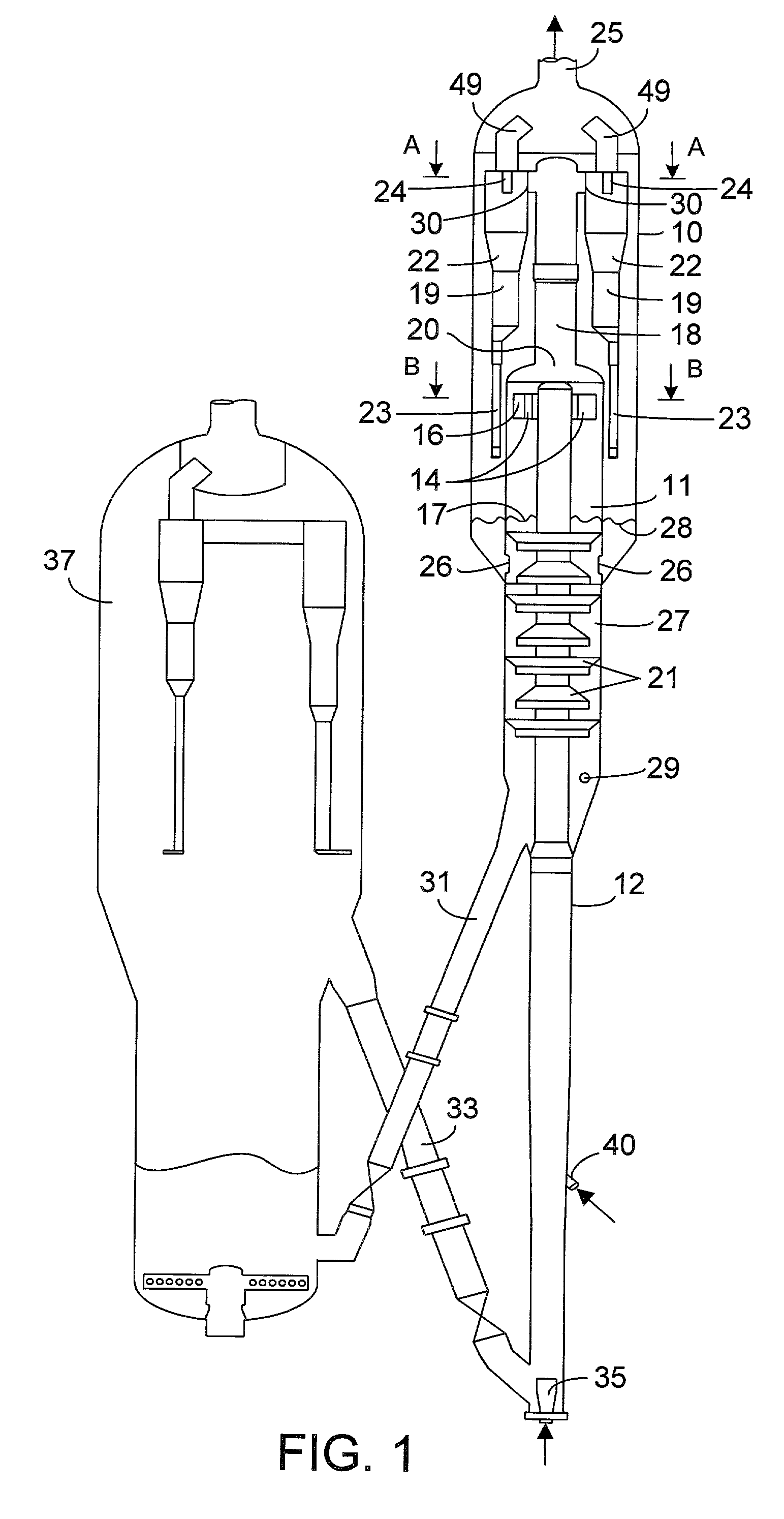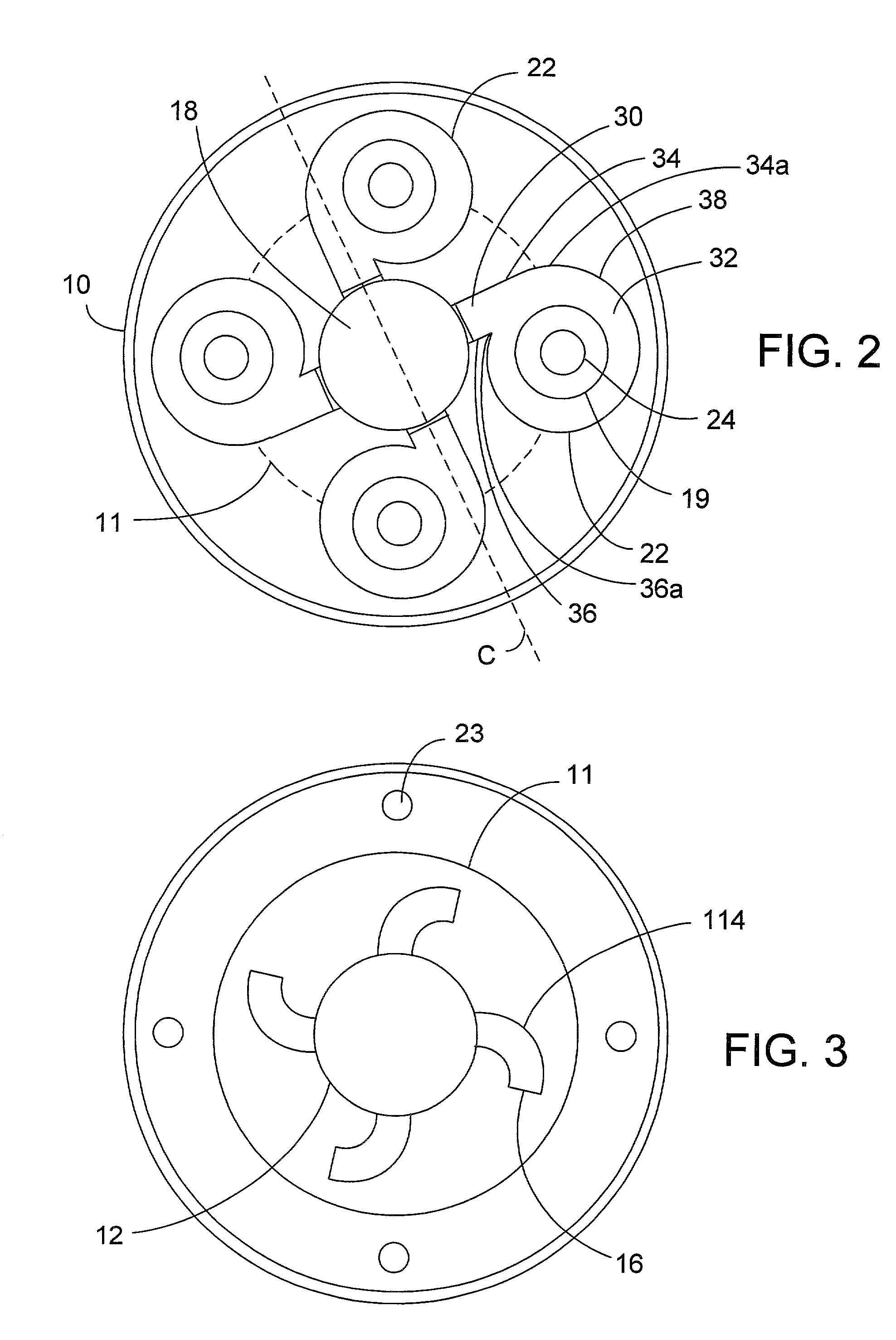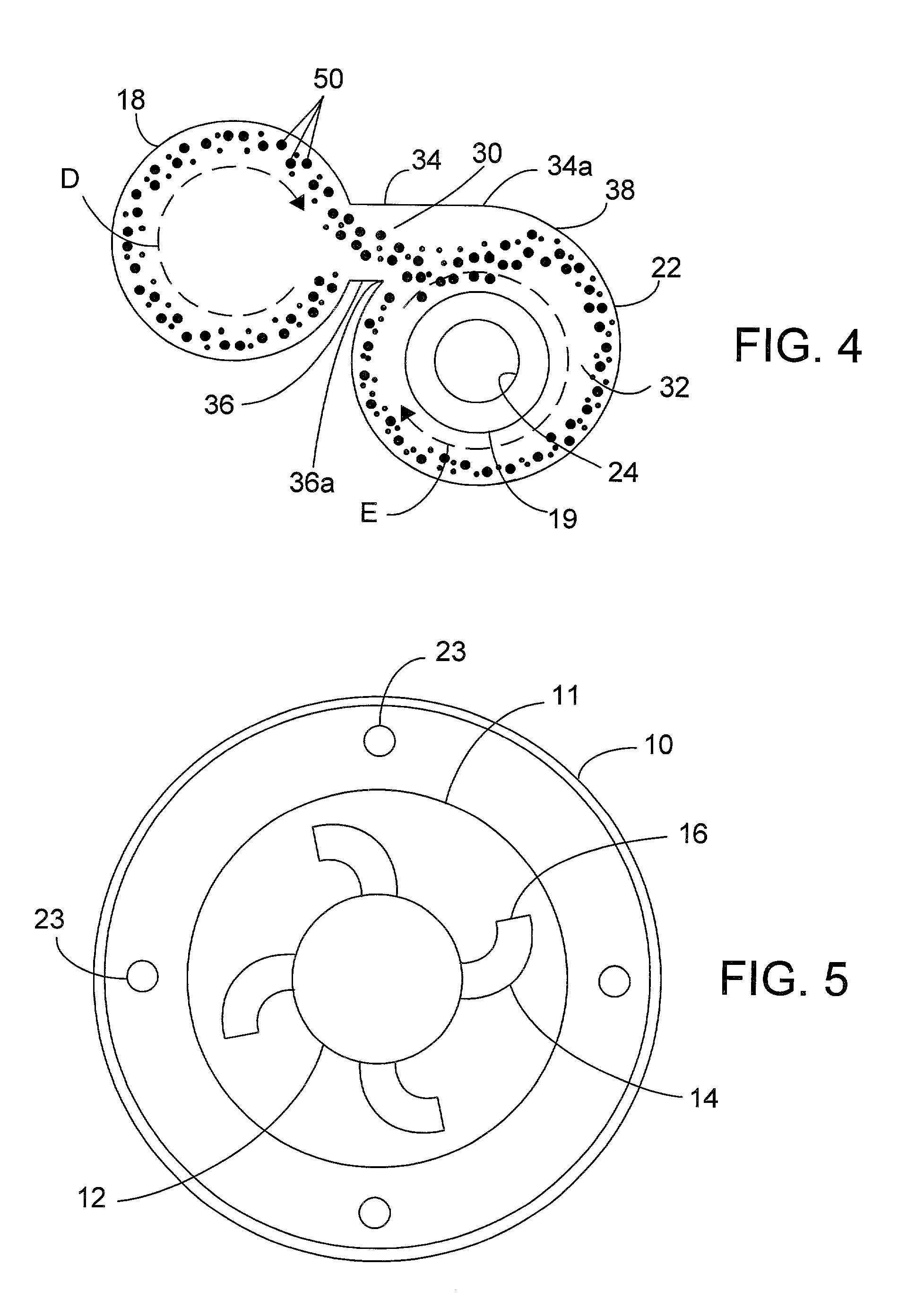Separation process and apparatus
a separation process and apparatus technology, applied in separation processes, lighting and heating apparatus, furniture, etc., can solve the problems of material cost, erosion of downstream equipment, and two-fold loss of catalysts that are not recovered from the fcc process
- Summary
- Abstract
- Description
- Claims
- Application Information
AI Technical Summary
Benefits of technology
Problems solved by technology
Method used
Image
Examples
Embodiment Construction
[0032] Computational flow dynamics (CFD) modeling using a FLUENT program was performed to study separation efficiencies for three sets of conditions. The following was assumed for all three sets of conditions: the minimum catalyst size was 40 micrometers, the gas density was 2.75 kg / m.sup.3, the gas velocity was 0.02 c.p., the velocity of the mixture exiting each swirl arm was 20.8 m / sec, the pressure was 299 kPa and the temperature was 549.degree. C.
[0033] The first set of conditions involved a model where radial cyclone inlets 30 to the cyclones 22 were disposed with respect to the gas recovery conduit 18 as shown in FIG. 2 and the swirl arms 114 were disposed as in FIG. 3. This model focused on the case where the angular direction of the swirl motion imparted by the swirl arms was the same as the angular direction of the swirl motion imparted by the cyclones 22 as shown in FIG. 4. The CFD modeling indicated that in this model, 21% of the mixture entering the cyclone veered toward...
PUM
| Property | Measurement | Unit |
|---|---|---|
| temperature | aaaaa | aaaaa |
| pressure | aaaaa | aaaaa |
| velocity | aaaaa | aaaaa |
Abstract
Description
Claims
Application Information
 Login to View More
Login to View More - R&D
- Intellectual Property
- Life Sciences
- Materials
- Tech Scout
- Unparalleled Data Quality
- Higher Quality Content
- 60% Fewer Hallucinations
Browse by: Latest US Patents, China's latest patents, Technical Efficacy Thesaurus, Application Domain, Technology Topic, Popular Technical Reports.
© 2025 PatSnap. All rights reserved.Legal|Privacy policy|Modern Slavery Act Transparency Statement|Sitemap|About US| Contact US: help@patsnap.com



